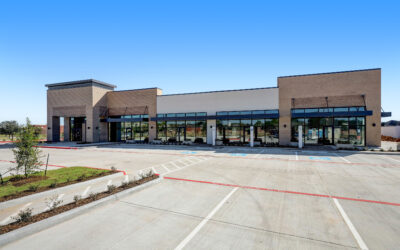Innovation is essential to survival for any company, in any industry – including (and maybe especially) the energy industry. Reputable technology innovations are subject to the Technology Readiness Levels as the new product is developed, tested, and launched into the market. Any technology-provider and/or developer knows that advancing from one TRL level is a challenge. Within the pipeline industry, new technologies have less than a 50% chance of succeeding. Successfully navigating all phases of the TRLs, including research, development, and deployment is essential.
The Role of TRLs in Technology Adoption
Technology Readiness Levels (TRLs) are a set of phases and criteria initially developed by NASA to understand the maturity of a technology during development. Now, they are the standard for developing technology that can be trusted by founders and successfully adopted in the market.
Every technology provider has one goal. Go from the bottom of the adoption curve to the top.
But everyone starts at the same spot at the start of the graph – the innovation phase. Then, field trials start in the early adoption phase, showing how the technology can be implemented in the operational environment. Finally, the technology can start taking off as the early and late majority adopt the use of the technology. TRLs describe this progression through each phase, so they can ultimately commercialize a value-adding product for the market.
There are 9 TRLs, each with a different set of criteria that must be met. The first 3 levels are considered the “Research” phase. This phase closely aligns with “Innovators” phase of the adoption curve. The concept, research and development, and very early testing is achieved in this phase. This phase is generally associated with academia, where cutting-edge concepts and ideation take place.
The last 3 phases are the “Deployment” phase. This is where the adoption curve starts to take shape for the early and late majority. This phase is the expertise of the industry and private companies that conduct the business behind launching a product to market.
But in order to move from the “Research” phase to the “Deployment” phase, technology providers must successfully navigate the “Development” phase with early adopters – otherwise known as the “Valley of Death.”
Fast Track Through the Valley of Death
If the Valley of Death is a desert, then testing and validation is the train track that gets you from point A (research) to point B (deployment) as soon and as painless as possible. However, you must buy the train ticket and invest in development. Either a) technology providers fail to do, or b) they hop on the train too quickly and test a technology on their early adopters before it’s ready. Eventually, they find themselves stuck in the gap and become part of the majority of technologies that fail to launch in the pipeline industry. ADV Integrity can help companies overcome the Valley of Death by providing validation services. Third party consultations at this stage mean you’re testing and validating with advanced engineering and testing, rather than trial and error with your early customers.
Your Ticket to Commercialization
The “development” phase comprises 3 levels of the 9 total TRLs. These three phases are: Technology validated in a relevant environment Technology demonstrated in a relevant environment System prototype demonstration in the operation environment As anyone can see, these three levels require comprehensive testing or demonstrations to validate the performance of the technology in an environment that simulates the real world. This testing can be hard to accomplish without the necessary tools, expertise, or resources. Typically, the key objective in this TRL grouping will be to replicate the performance of technology hardware and data accuracy found in the lab, but under harsher field conditions. Testing and validation consulting providers, such as ADV Integrity, have the resources and consulting staff with the experience to provide testing and validation to the technology providers that need it or might be stuck in “death valley.” The process improvement plan at ADV Integrity during validation will be based on industry feedback and pipeline experience to improve commercialization and reach the right audience.
Don’t Stop at Research and Don’t Skip Development
All technology providers should recognize the need to adequately invest in the development stage of the TRLs. This investment doesn’t have to be huge – just bringing on the experts with the experience and resources to validate your technology appropriately and accurately will successfully fast-track you to deployment. Bringing in a third-party validation provider also ensures that your technology has the credibility that will prime it for launch in the deployment stage.


